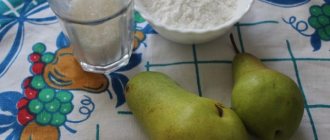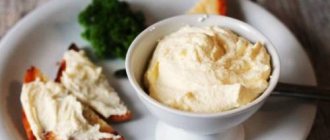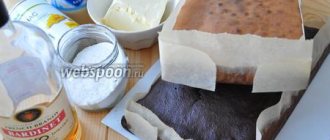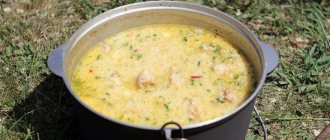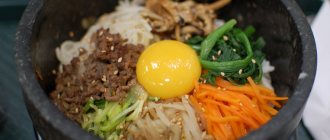Candied fruits - benefits and harms
Candied fruits are fruit and berry pieces candied in syrup. This delicacy came to us from Eastern countries and most people use them in their diet every day, believing that they are very healthy, while others, on the contrary, consider them harmful. So what are they really like? This is what we will now try to find out.
The benefits of candied fruits
Candied fruits are made from fruits and berries, which already indicates that the product is natural, but due to the abundance of sugar its benefits are somewhat reduced. And besides, heat treatment destroys vitamin C. Of course, they cannot replace real fruits, but if compared with sweets, candied fruits can be a worthy alternative, since they contain glucose, vitamins and minerals, and fiber that is useful for digestion .
Candied apples, pears, apricots, plums and citrus fruits are considered the healthiest. Their fruits are denser, which means that they do not collapse much during cooking. They also contain many vitamins that help maintain metabolic processes in the body, fiber, which affects digestion and stimulates intestinal cleansing. People with weakened immune systems are advised to consume candied exotic fruits as much as possible.
Candied fruits made from watermelon or citrus peel contain a lot of pectins, which have a positive effect on intestinal function and cholesterol levels. They can lower blood sugar and reduce the risk of developing malignant tumors.
The benefits and harms of candied ginger
As for candied ginger, they can rightfully be called a natural universal tablet, with which you can get rid of a sore throat and various diseases of the upper respiratory tract. They improve appetite, help speed up metabolic processes and the production of gastric juice.
womanadvice.ru
When not to eat candied ginger
Ginger has a rich composition, so taking it even in the form of candied fruits has contraindications.
Avoid this treat if you have diabetes, stomach ulcers, gallstones or urolithiasis. Ginger irritates the mucous membrane, causing movement of stones and painful sensations.
Use sweets with caution if you have high temperature or blood pressure. Candied fruits enhance the effect of all drugs, so their simultaneous use is contraindicated.
Despite the fact that ginger root is used in the fight against excess weight, candied fruits are contraindicated in various forms of obesity. Do not neglect this, otherwise you will only end up gaining weight.
As you can see, the delicacy is not difficult to prepare, but you need to use it carefully, taking into account all the contraindications.
Most often you can see candied pineapple on sale, but ginger also turns out very tasty! Especially if these candied fruits are prepared at home. You should definitely try it to be sure.
This fancy ginger root: benefits and harms
In the form of a ground seasoning, this exotic root vegetable has been known for a long time, and not only in its homeland - in India and the countries of Asia Minor, but also in Europe and Russia. But we recently tried ginger root as a tasty remedy for treating many diseases and for losing weight. Its benefits and harms are also not fully studied, at least not everyone is aware of it.
What's good about ginger
In fact, everything about it is good: the taste, the spiciness, the beneficial properties, and even this multi-fingered root looks very funny. For a long time, many of our compatriots could not understand what kind of overseas miracle appeared on supermarket shelves and what they eat ginger root with. Its benefits and harms are a topic for a separate discussion, but first, a little about its unique composition. In ancient India, the plant was considered a cure for all diseases. We can partly agree with this: after all, ginger is a real storehouse of vitamins (A, C, group B), valuable microelements (calcium, potassium, magnesium, zinc, phosphorus, iron, etc.), amino acids important for the human body (phenylanine , valine, methionine, tryptophan and others).
And now about the benefits
This is perhaps the most difficult question about ginger root. The benefits (and harm in some cases) can be described on dozens of pages, and it seems incredible. Nevertheless, the healing properties of this bizarre root are used in folk medicine to stimulate the digestion process and treat diseases of the gastrointestinal tract, to cleanse blood vessels. Its antiparasitic effect is also known. Ginger can also be taken as a pain reliever for headaches, muscle, joint and menstrual pain. It improves immunity and tone. This plant is also taken for various female diseases - fibroids, adhesions, infertility. And men revere it for its ability to prevent the development of prostatitis and stimulate sexual activity. Ginger is especially popular for treating colds. The shock doses of vitamins and essential oils included in its composition have a strong warming and diaphoretic effect. Finally, this hot, piquant spice is extremely loved by those who want to lose weight without much sacrifice.
Ginger root for weight loss
This is where you can give yourself free rein. Tea, a variety of cocktails, an addition to fresh salads, side dishes for meat and fish dishes, marinated slices for sushi, candied fruits - ginger root is good in any form. The benefits and harms in this case are simply incomparable: there are many times more recommendations for its use than contraindications - we’ll talk about them a little later. In the meantime, here are the most delicious recipes for losing weight.
- Ginger tea. Cut a fresh root 10-12 cm in size into thin slices, put in a liter thermos and pour boiling water over it. Throw in a slice of lemon and close. Leave for several hours. When using, add honey.
- Drink with ginger and aromatic herbs. Grate 100 g of ginger, throw into a 3-liter saucepan with boiling water, add mint leaves, lemon balm, lemon slices, turn off the heat and cover with a lid. An hour later the drink is ready. You can drink it both hot and cold.
Drinks and teas with ginger cleanse blood vessels, intestines, speed up metabolism and burn fat.
Ginger: benefits and contraindications nearby
Like any herbal remedy, ginger has a number of contraindications. Thus, due to the abundance of essential oils in it, it is recommended to take it with caution for people with stomach and intestinal ulcers. Due to its strong tonic effect, ginger is not recommended for hypertensive patients, people with heart disease, and pregnant women. And one more thing: you don’t need to abuse it at night - there is a danger of not falling asleep.
fb.ru
Chemical composition
The best part is that ginger delicacy is not just a new taste, but also a great benefit. Ginger root contains many chemical elements (scientists have counted more than 400) that have a beneficial effect on the body, strengthen the immune system, and fight various ailments.
- ascorbic acid (vitamin C) – gives vigor, beauty, supports the body’s immune forces;
- choline (vitamin B4) – regulates fat burning processes, calms, normalizes metabolic processes, keeps the brain active;
- other B vitamins - responsible for the most important life processes, indispensable for maintaining the beauty of skin and hair;
- nicotinic acid (vitamin PP) – promotes active cell growth, ensuring oxygen saturation of tissues, prevents hypertension and thrombosis;
- magnesium - calms the nerves, protects bones from calcium leaching, strengthens the walls of blood vessels, cleanses them;
- Potassium – strengthens the heart, prevents and relieves swelling, protects the brain.
In addition, essential oils give ginger root its pungent taste and fresh aroma. The plant contains beneficial fatty acids, as well as various microelements: phosphorus, iron, calcium, sodium.
So we can talk about the benefits and harms of ginger in sugar, first of all, from the point of view of its enormous and undoubted benefits. Can ordinary sweets like biscuits, caramel or chocolates compare to a slice of candied ginger root? No, especially since candied ginger has numerous healing properties that must be used.
The characteristics of the herb and the preparation of candied ginger make their composition unique. Ginger root contains more than 400 chemical compounds - they affect the body in different ways and can be beneficial or harmful. The product contains many vitamins, minerals and essential oils:
- Vitamins B, C, PP support the immune system and stabilize the functioning of the nervous system. The beneficial effect on the condition of nails, hair and skin makes candied ginger valuable in cosmetology.
- Magnesium and Calcium strengthen bones, blood vessels and stabilize the functioning of the heart muscle. storehouse of health
- Sodium, Phosphorus, Iron.
Dried ginger in sugar is not always useful for weight loss. The fresh root of the plant contains only 90 kcal. At the same time, the calorie content of ginger dried in sugar can reach 200-300 kcal. For women when losing weight, such a product should not be included in the diet; it can harm the weight loss process.
We invite you to read: Cornflower: recipes, medicinal properties and contraindications
The enormous benefits of the plant are visible even at the stage of studying the chemical composition. But some conditions may have contraindications. We propose to consider the benefits and harms of delicacies based on the properties of the substances in the composition.
This delicacy consists of 80% ginger root, and sugar serves as a preservative and softens the taste.
100 grams of the finished product contain 3 grams of protein, 0.4 grams of fat and 54.5 grams of carbohydrates, with an energy value of about 215 kcal.
The original product itself contains a huge amount of useful substances, vitamins, macro- and microelements, including:
- vitamins C, PP, A, B1 and B2;
- potassium, phosphorus, magnesium, calcium, sodium, manganese, silicon and iron;
- nicotinic, oleic and linoleic acids;
- phenel-like component gingerol;
- cellulose.
How to prepare candied ginger?
candied ginger
Many people know that ginger has beneficial properties, but not everyone knows that it is a root that looks like a weirdly shaped potato. To prepare ginger for food, the peel is cut off. The cuisine with it is very diverse: first courses, meat appetizers, salads, desserts, candied ginger. This amazing natural product has numerous healing properties.
It relieves pain and heals wounds, stops inflammation, relieves fever, and facilitates sweating. But its most beneficial properties are its ability to enhance immunity and slow down the oxidation of organic substances. The root is rich in vitamins and amino acids. It is worth noting that fresh ginger root is more useful, although you can find ginger on sale in the form of spices, in marinade, in chocolate, and even candied ginger.
The benefits and harms of ginger
Ginger is a great help with high cholesterol in the blood; it is an effective stimulator of gastrointestinal tract activity, cleansing the intestines of toxins and toxic substances. A unique medicinal product serves to improve appetite and increase the body’s protective properties during the spread of viral infections in the cold season. However, the effect of ginger is twofold; it can be both beneficial and harmful.
Therefore, such a powerful healing agent has contraindications for use. This is especially true for people with health problems. In case of erosions, ulcers of the mucous membrane of the duodenum or stomach, this spicy product can have too adverse an effect on diseased organs, so it should not be used as food. This may harm the affected areas of the gastrointestinal tract.
If you have serious diseases such as liver cirrhosis, acute or chronic hepatitis, ginger can also cause harm, because it can increase liver secretion. Caution should be exercised when using this root for hypertension, coronary heart disease and after a stroke or heart attack. Ginger is also contraindicated for pregnant and nursing mothers.
So the benefits and harms of ginger are completely related to your health status. If a person is healthy, this miracle product is useful and only improves health; if there are serious diseases, the burning root can cause harm and worsen the disease.
Ginger dishes
Every housewife strives to combine both taste and healthy qualities in the prepared food. This is not always easy to do, so all dishes are divided according to their composition into tasty and healthy. But there are still successful combinations when a dish is both tasty and healthy at the same time. The recipe for any ginger dish refers specifically to such treats.
Ginger is used in the preparation of meat dishes, it is used to make savory sauces, salads and desserts, it is used to season baked goods, and it is brewed as a drink. And for sushi lovers, it has become indispensable in marinated form. The beneficial properties of this natural product help improve digestion, so along with the bright taste, all these dishes also have a healing effect.
The ginger drink has proven itself especially well. It helps not only with colds, but is also used as a means to maintain a slim figure and lose weight. The ginger tea recipe has become very popular in our country and in European countries. After all, just one glass of this drink a day strengthens the immune system, normalizes metabolism and relieves the body of excess weight. The ginger tea recipe is simple. Pour half a teaspoon of grated ginger into a glass of boiling water and simmer over low heat for 10 minutes. Add lemon and cinnamon to the finished drink.
The same recipe for a ginger drink is also suitable for people watching their weight, but mint leaves and half a spoon of honey are added to the finished decoction along with a slice of lemon.
Candied ginger
Fresh ginger root is not available everywhere. To store the product at home, it is candied. Properly prepared candied ginger can be stored in an airtight container for about six months. In China, they believe that this product improves your mood no worse than chocolate, so we should adopt their experience and start preparing ginger in sugar.
We offer a simple recipe for ginger candies for those with a sweet tooth. Cut the fresh root into small cubes, add water and boil for about half an hour. Then drain the water and sprinkle the cubes with granulated sugar. Leave for a day until the cubes absorb the sugar. Close the finished candies in a glass container and store in a cool place.
Recipe for ginger cooked in sugar syrup. Cut 1 kg of peeled ginger into thin slices, pour half a kilo of granulated sugar into 1 liter of water and bring to a boil. Place sliced ginger root into sugar syrup. Simmer for 1 hour over low heat until a thick syrup forms. By this point, the plates will become transparent and shiny.
Place the ginger slices in a sieve and let the syrup drain into the pan. Roll them in granulated sugar and place on foil or parchment and dry for several hours. Candied ginger can be stored in an airtight container for about six months.
sugar ginger recipe
Candied ginger is a wonderful treat for children. It is very healthy and nutritious. Its energy value is 303 kcal per 100 g of finished product. Pour the thick sugar syrup, similar to condensed milk, remaining after preparing it into a jar and add 1 teaspoon to the tea along with honey and lemon juice. This tea is no less tasty than that made from grated fresh ginger root.
Recipe for apple dessert with ginger
This recipe is suitable for gourmets and connoisseurs of fine cuisine. Boil a pound of cored and peeled apples in a small amount of water along with 20 g of grated ginger root and cloves. Remove from heat, remove cloves, cool, add 1 tbsp. spoon of honey and soften the apples to a puree. Gently mix the applesauce with 200 ml of whipped cream, do not mix completely, to get a beautiful heterogeneous marbled shade. Place the finished dessert in a bowl, garnish with thin slices of candied ginger and nutmeg. Serve the treat with tea along with ginger cookies.
We wish you bon appetit and excellent health!
pro-imbir.ru
Recipe for candied ginger
Candied ginger is boiled and dried pieces of ginger root. They are used in making jams, confitures, added to baked goods or simply added to tea.
How to cook:
- Peel the root and cut into pieces of arbitrary shape, add water and cook for 1 hour. Place in a colander to drain the liquid.
- Prepare syrup from sugar and water, add prepared ginger and cook for another 1 hour.
- The mixture is stirred regularly so that all pieces are evenly coated with syrup. Once the ginger becomes translucent, remove it from the syrup and place it on baking paper.
- Dry the candied fruits and roll in sugar. Transfer to a glass jar and close the lid tightly. The delicacy is stored in the refrigerator for 3-4 months.
At room temperature, candied fruits take a long time to dry, so you can spread them on a baking sheet and dry them for 30 minutes in the oven at 40 C.
Ingredients:
- Ginger – 200 gr;
- Sugar – 1 tbsp;
- Water – 2 tbsp;
- Cinnamon – 1 tsp;
- Cloves – 2 pcs.
How to cook:
- Peel the root, cut into cubes and boil in water for 30–40 minutes. Place on a sieve until all the liquid has drained.
- Mix sugar with water and cook syrup. Add spices and prepared ginger, cook for another 1 hour.
- Remove the ginger slices and dry in the oven. Roll the finished treat in powdered sugar.
Using this simple recipe, you can prepare sweet candied ginger at home by adding 2-3 tbsp to the syrup. l. honey
Ginger has a rich composition, so taking it even in the form of candied fruits has contraindications.
Avoid this treat if you have diabetes, stomach ulcers, gallstones or urolithiasis. Ginger irritates the mucous membrane, causing movement of stones and painful sensations.
Use sweets with caution if you have high temperature or blood pressure. Candied fruits enhance the effect of all drugs, so their simultaneous use is contraindicated.
Despite the fact that ginger root is used in the fight against excess weight, candied fruits are contraindicated in various forms of obesity. Do not neglect this, otherwise you will only end up gaining weight.
As you can see, the delicacy is not difficult to prepare, but you need to use it carefully, taking into account all the contraindications.
Ginger in sugar: benefits, recipes and their calorie content
Ginger is not just a fashionable product, but a noble spice with a long history. Several thousand years ago, the oriental delicacy conquered Ancient Greece and Rome, and since then the fashion for ginger in Europe has not subsided.
In Rus', the spicy seasoning was added to drinks and jam, buns and Easter cakes, but in Soviet times the spice was undeservedly forgotten. Now she is regaining her position.
There is pickled ginger, dried, dried and the most unusual dessert - ginger in sugar, the beneficial properties of which are no less than those of the fresh product.
Ginger: beneficial properties and contraindications
Ginger in sugar (or candied ginger) is a truly unique delicacy. The taste alone is worth it - the specific bitterness and pungency of the fiery seasoning combine with the sweetness of sugar and give an absolutely amazing flavor.
Ginger in sugar
What's the benefit?
The beneficial properties of candied ginger can be listed for a very long time - this sweetness takes all the best qualities from fresh ginger root. How is this product useful?
Burning candied fruits can be safely recommended to all people of mental work - office workers during deadlines and reports, students and schoolchildren.
- The product activates blood circulation, stimulates brain activity and is simply very invigorating - fresh ideas will appear by themselves after a cup of tea with a slice of sweet ginger.
- Also, ginger in sugar activates metabolic processes in the body, helps improve digestion, regulate stool - and just a few pieces a day are enough.
- The fresh root is known as a blocker of fat formation, and although candied fruits have these beneficial qualities to a lesser extent, they can well be called a dietary dessert. The energy value of sweet ginger slices, however, is 3-4 times higher than the fresh root (calorie content - 200-300 kcal per 100 g), but it is very difficult to eat such an amount of product at a time.
And sweet dried ginger is an excellent aphrodisiac (this benefit of the root was known to the ancient Hindus).
- Try replacing sweets for evening tea with your loved one with sweet-burning candied fruits - and your intimate life will certainly sparkle with new colors.
- In addition, ginger in sugar perfectly warms and helps in the early stages of a cold, tones and improves immunity.
Useful properties of ginger - information in the video:
Contraindications
There are few products around which there is as much controversy as around this spice, especially candied ginger. Is it possible to use ginger for diabetes, during pregnancy, is it allowed to give such unusual sweets to children, what are the contraindications?
Experts name strict contraindications in which ginger is prohibited in any form:
- ulcers and other gastrointestinal diseases in the acute stage;
- severe kidney damage;
- individual intolerance;
- kidney and gall bladder stones.
Sweet ginger should not be consumed if you have type 2 diabetes (although ginger tea and fresh root are allowed if you have high sugar levels), there are contraindications during pregnancy: candied fruits are prohibited if there is a threat of miscarriage and in the later stages.
- No contraindications have been identified for the fetus, so the question of whether pregnant women can take ginger can be answered positively. The only thing is that you need to know when to stop, 2-3 pieces will fully provide the body with all the benefits.
- Can ginger be given to children? Here doctors do not give an exact answer: strict contraindications are up to 2 years of age, then you can give candied fruits in small pieces, but only if the kids like their taste. Otherwise, the benefit for children will turn into harm.
Medicinal properties of ginger
The healing properties of ginger were sung by ancient Chinese and Indian healers in their treatises, and in the Middle Ages, monks especially appreciated the beneficial qualities of ginger root as a tonic and antibacterial agent.
Ginger root
After processing, ginger in sugar has almost all the beneficial qualities of the fresh root, and it can be stored (without losing its healing power) much longer than the fresh product. Why are the medicinal properties of ginger so unique, and what does the spicy root help with?
Candied ginger:
- serve as an excellent means of prevention and treatment in the early stages of ARVI (they warm up well and relieve inflammation);
- help cope with a lingering cough, improve the condition of bronchitis and even asthma;
- relieve heartburn, nausea, help improve digestion;
- remove toxins and traces of heavy metals from the body (residents of megacities simply need regular tea with ginger in sugar);
- increase immunity and support the body during seasonal colds;
In the first months of pregnancy, candied fruits help cope with toxicosis. For women during the most important period of their lives - when carrying a baby - a piece of ginger in sugar will be especially useful and will be an excellent remedy for nausea and weakness.
- have a beneficial effect on the sexual sphere: the sweet-burning dessert improves male potency and increases desire in women;
- are a good auxiliary therapeutic agent against all types of tumors (able to stop the growth of dangerous cells);
- relieve joint and muscle pain;
- cleanse the blood and prevent the formation of dangerous cholesterol plaques;
- freshen breath, relieve gum swelling and eliminate bleeding. If you have problems with gums and bad breath, you can also replace chewing gum with a slice of hot candied fruit, but you should not get carried away with this remedy: sugar can damage your teeth.
Candied ginger improves memory and helps maintain brain activity until old age.
Ginger in sugar is not just an unusual addition to a cup of tea, but your home recipe for many ailments. How to make ordinary candied fruits a pleasant and effective medicine? For sore throats and colds, you can simply suck on a slice of sweet root several times a day - and the disease will certainly subside.
Ginger in sugar: chemical composition and calorie content
The chemical composition of ginger in sugar is simply amazing: the burning root contains about 400 different chemical compounds. The composition of the product includes vitamins, healing elements, and essential oils...
Candied ginger slices
What makes the chemical composition of candied ginger root unique?
- Vitamin B4 (choline) has a calming effect, normalizes the processes of metabolism and fat burning, and most importantly, is responsible for the full functioning of the brain, memory and learning ability until old age.
- Vitamin C invariably guards our immunity, provides vigor, excellent mood and beauty.
- B vitamins ensure smooth metabolism and the health of our nerves, skin, nails and hair.
- The beneficial properties of vitamin PP (nicotinic acid) help maintain normal redox processes in tissues, active cell growth, and protect against the formation of blood clots and hypertension.
- Magnesium, which is part of the ginger root, helps to accumulate calcium in the bones, cleans blood vessels, and strengthens their walls.
- A record amount of potassium helps strengthen the heart muscle and brain. The spice contains more than 400 mg of potassium per 100 g with a daily requirement of 3-4 g.
- The healing microelement normalizes water-salt metabolism, removes excess fluid from the body, and eliminates cardiac and renal edema.
The candied ginger root also contains iron, phosphorus, sodium, calcium and other elements, fatty acids and warming oils.
Calorie content
Supporters of a healthy lifestyle, beautiful ladies and simply lovers of unusual candied ginger are invariably concerned with the question: how many calories are in this healthy delicacy?
The calorie content of candied ginger, of course, is many times greater than that of fresh ginger. If the caloric content of 100 grams of ginger bought on the market is 80 kcal, then the sweet stuff contains from 200 to 300 kcal.
The number of calories in the finished product depends on the method of preparation and the dose of sugar that the generous cook added to the candied fruit. In this case, the amount of sugar is even greater than that of marmalade, so nutritionists do not recommend getting carried away with candied ginger root - you can get problems with weight and teeth.
Candied ginger
But let's be honest - it's quite difficult to eat 100 grams of candied ginger at a time: the peculiar taste of the dessert simply won't allow it. Therefore, the main contraindications for such ginger are severe obesity and concomitant diabetes; it is even possible to occasionally include candied fruits in a regular diet for weight loss.
The advantages of such sweet-burning candies are countless: they are completely natural, do not contain chemicals, they cannot be eaten in large quantities, and after such a dessert the body receives healing vitamins, minerals, and also excellent digestion and regular bowel movements.
Ginger recipes
How to use ginger - even the most experienced cooks can get confused when answering this question.
There are a great many recipes with ginger root - these include candied fruits, teas, jam, and all kinds of warming and dietary drinks. Let's talk about the most popular ones.
Recipe for candied fruits “Candied ginger”
For those wondering how to make candied ginger at home, there is a simple, basic recipe. The big advantage of homemade candied fruits is that the amount of sugar can always be varied, reducing or increasing the calorie content of the product according to your taste.
Candied ginger, recipe in video:
Ingredients
- one root of fresh ginger (200-250 g),
- 1.2 glasses of water,
- one glass of sugar (for syrup),
- sugar for sprinkling.
Preparation of candied ginger:
- Peel the ginger like potatoes and cut into slices approximately 0.5-0.7 cm thick (can be cubes or strips).
- Fill with water and cook for about an hour so that the slices soften and the excess heat evaporates.
- Prepare the syrup: add sugar to water, stir until completely dissolved and bring to a boil.
- Place the pieces of future candied fruit in a colander and, when the water has drained, transfer the ginger into the syrup and cook until the slices become transparent.
- Let the candied fruits cool, roll them in sugar and place them on parchment until completely dry (you can dry them in the oven). You can then store the candied ginger root in the refrigerator or kitchen cabinet.
Tea “Ginger with lemon and sugar” - a healthy recipe for colds and coughs
Warming ginger tea has long been known for its healing powers, but not everyone knows how to brew ginger tea correctly.
The most economical way is tea with ginger syrup
You need to take a few teaspoons of hot sweet syrup that remains after preparing candied fruits, add lemon juice, boiling water, if desired, a little honey and brew like regular tea.
You can store the prepared ginger-sugar syrup in the refrigerator for up to a week.
Ginger tea with lemon
Classic ginger-lemon tea
For this you will need: half a large lemon, a liter of water, 5-10 pieces (teaspoons) of sugar and a 4-5 cm ginger root.
- The ginger needs to be peeled and grated on a coarse grater.
- Then add lemon (juice or cut pieces, as for tea), sugar to taste and pour boiling water.
- When the drink is brewed, after 5-10 minutes, strain and let it cool slightly.
Ginger jam
If you don't like candied ginger, but want something unusual, try making your own ginger jam. This delicacy goes perfectly with citrus fruits; the classic recipe is ginger jam with lemon.
For preparation you will need: 200-250 g of fresh ginger root, one large lemon, 2 cups of sugar (heaped).
- The root needs to be washed, peeled and cut into plastic pieces 2-3 mm thick, the lemon - into small pieces along with the peel. Mix ginger, sugar and lemon and leave for 30 minutes so that the sugar dissolves a little.
- Then put the bittersweet-hot mass on the fire and cook, stirring, until the ginger slices become transparent. After the jam boils strongly, you need to boil it for another 5 minutes.
- Pour the ginger-lemon jam into sterilized jars hot and after cooling, put them in the refrigerator. It can be stored for up to a year.
Orange-ginger jam, recipe in video:
Ginger drink for weight loss
If you strictly watch your figure and are an ardent supporter of a healthy diet, then this drink is ideal for you: kefir, cinnamon, ginger and red pepper.
This spicy smoothie cleanses the body, stimulates digestion, burns fat and perfectly tones - it's the perfect smoothie for breakfast or a light afternoon snack.
Ingredients:
- half a teaspoon of finely grated ginger and ground cinnamon,
- a pinch of red pepper.
Mix everything in a blender and pour into a glass. You can’t even store such a drink in the refrigerator - you need to drink the ginger smoothie immediately after preparing it.
How to store ginger in sugar and how to use it
The shelf life of ginger is a controversial issue. It all depends on the type of burning root.
Fresh can be stored for up to a month, dried for about six months, pickled can be stored for about a month. The shelf life of candied ginger is up to 3-4 months.
- To store candied ginger, you first need to choose the right container. It is best to store treats in glass containers or plastic containers.
- After cooking, homemade candied fruits can be kept at room temperature for three weeks, then it is recommended to put them in the refrigerator.
Store-bought ginger dessert can easily be left in the kitchen cabinet for storage. Ginger in sugar, storage
How to eat candied ginger?
It would seem that the use of candied fruits is a very narrow area: as a snack with tea or instead of chocolate at the computer, but in fact the use of the sweet root is much wider.
Ginger in sugar can be washed down with tea or coffee, added to morning muesli and oatmeal, put in biscuits, cottage cheese casserole, and simply snacked during office hours: it perfectly quenches your sweet tooth, energizes your tired brain and helps you last until lunch.
A slice of ginger will also help with a sore throat - pharmaceutical cough lozenges can be supplemented with hot candied fruits: the effect will come much faster.
Sugared ginger can hardly be called a classic candied fruit - not everyone will appreciate the unusual taste of this delicacy. But fans of the fiery dessert can only be envious: candied ginger fits perfectly into any diet, helps to cope with many ailments, and also invariably improves mood. And most importantly, anyone with a sweet tooth can prepare candied fruits at home.
(
3 votes, average: 3.33 out of 5)Loading…
kapushka.ru
Recipe for candied ginger with spices
Ingredients:
- Ginger – 200 gr;
- Sugar – 1 tbsp;
- Water – 2 tbsp;
- Cinnamon – 1 tsp;
- Cloves – 2 pcs.
How to cook:
- Peel the root, cut into cubes and boil in water for 30–40 minutes. Place on a sieve until all the liquid has drained.
- Mix sugar with water and cook syrup. Add spices and prepared ginger, cook for another 1 hour.
- Remove the ginger slices and dry in the oven. Roll the finished treat in powdered sugar.
Using this simple recipe, you can prepare sweet candied ginger at home by adding 2-3 tbsp to the syrup. l. honey
Useful properties of ginger and a little history
Ginger is a plant that originally grew in India and China, then became widespread throughout the world due to its unique properties.
Photo: Depositphotos.com Author: tycoon
Ginger root or ginger root contains essential oil (1-3%), giving it an unusually tart, spicy aroma that can eliminate apathy, increased fatigue, lethargy, enhance charm, self-confidence, and sociability. But this is not a complete list of the beneficial properties of ginger.
During the reign of Arthur, to increase the mental activity of the brain before each battle, members of the Round Table were recommended to try ginger. And in the Middle Ages, ginger was used as a medicine for various types of fever. History knows that the English King Henry VIII, from 1509 to 1547, demanded that the mayor of London use ginger in the treatment of bubonic plague.
Medicinal properties of ginger
Ginger contains vitamins C, B1, A, B2, micro- and macroelements (zinc, sodium, iron, potassium, calcium, magnesium and sodium salts), essential amino acids (valine, tryptophan, threonine, leisine, methionine, phenylanine, etc.) .
Ginger is not primarily a spice, but a medicinal product with a wide spectrum of action. It protects the body from parasites, relieves infertility and frigidity, increases potency and immunity, has antispasmodic, anti-inflammatory, analgesic, absorbable, diaphoretic, tonic, sedative, carminative, antioxidant, healing, antipyretic and stimulating effects.
Ginger is useful for indigestion, intestinal, biliary, renal colic, nausea, belching, high blood cholesterol, diarrhea, seasickness, morning sickness, poor appetite, high blood pressure, colds, scurvy.
The plant has a cleansing effect on the body, removes toxins and waste, resulting in improved overall health, memory, vision and mental acuity.
When consuming ginger, blood circulation improves in all parts of the body. Blood flowing to the organs, including the genitals, stimulates their work. Since ancient times, it has been believed that ginger is not a simple plant, but an aphrodisiac that can ignite the fire of passion.
Possible harm of ginger
The danger lies in negative interactions with herbs, medications and nutritional supplements. Ginger itself prevents blood clotting, so it should be excluded from the diet during treatment that involves thinning the blood. If you are taking medications for high blood pressure, consuming ginger is also a concern. It can cause arrhythmia and a serious decrease in blood pressure.
poleznenko.ru
Sweets are a favorite treat for many people, both children and adults. The modern confectionery industry offers a wide range of all kinds of sugar-based products. However, in addition to the fact that sugar itself is harmful in excess, many products contain flavorings, dyes and all kinds of additives (emulsifiers, thickeners and other “harmful” index E), therefore, among all sweets, products made from natural sugar are of particular value. base (marmalade, candied fruits).
What are candied fruits?
Candied fruits are an oriental sweet with an ancient history. Various fruits, in order to avoid spoilage, were poured with sugar syrup and boiled, then dried - a tasty, aromatic and healthy delicacy was ready. Almost all types of fruits, berries and some vegetables are used to make candied fruits. Due to such diversity, it is not possible to determine the exact composition and nutritional value of this product. Some nutritionists claim that candied fruits, due to excessive amounts of sugar, will not bring any benefit to the body, others prove that they are full of useful substances.
The benefits of candied fruits
Each individual type of candied fruit contains the same vitamins, chemical elements and nutrients as a similar fruit or vegetable. True, the abundance of sugar somewhat diminishes the usefulness of candied fruits, but if you replace sweets with them, then the benefits from them will be much greater - in addition to the sweet additive of glucose and carbohydrates, the body will receive a set of fiber, vitamins, micro- and macroelements. The most useful candied fruits are made from dense fruits - apples, pears, plums, apricots, oranges, lemons, watermelon and citrus peels.
Various citrus fruits (from the banal lemon to the exotic kumquat) are the favorite raw materials for the production of candied fruits for many manufacturers. Properly prepared candied fruits contain all the beneficial substances (vitamins C, A, P, B). Eating candied citrus fruits (of course, if they are prepared according to all the rules) saturates the body with vitamins and helps remove toxins. Candied fruits from various citrus fruits are recommended to replace candies and other sweets for people who have suffered infectious diseases, surgical operations, as well as significant physical and mental stress.
To prepare candied citrus fruits, the peel of the fruit is usually used, and it contains a large amount of pectin substances, which have a beneficial effect on intestinal function, reduce sugar and cholesterol levels, and reduce the risk of skin cancer. The recommended daily dose of pectin is 25–35 g.
How to choose candied fruits?
Only real candied fruits are useful; they are distinguished by a paler color, close to natural shades, and the absence of a pungent odor. Unnaturally bright colors indicate dyes added to the product. You cannot buy candied fruits that have stuck together into one lump (they were prepared with violations of the technology or were stored incorrectly). When squeezed, candied fruits should not release moisture. If, upon careful examination, grains of sand are noticed on the candied fruit, then the quality of the product is not the best - the raw materials were not washed before cooking.
Candied ginger with honey
Honey makes ginger softer, more tender and sweeter. Try it, you will definitely like it!
How to cook:
- Peel the root and cut into slices.
- Place the slices in a saucepan and cover with water.
- Leave for a day, draining the water every six hours.
- Combine honey with 50 ml of water and bring to a boil.
- After this, place the ginger pieces in a saucepan with honey.
- Cook for thirty minutes.
- Next, place them on a baking sheet covered with paper.
- Place in the oven to dry at low temperature.
- Then roll the pieces in powder and you're done.
Tip: if you want the most tender candied fruits, soak them for three days.
